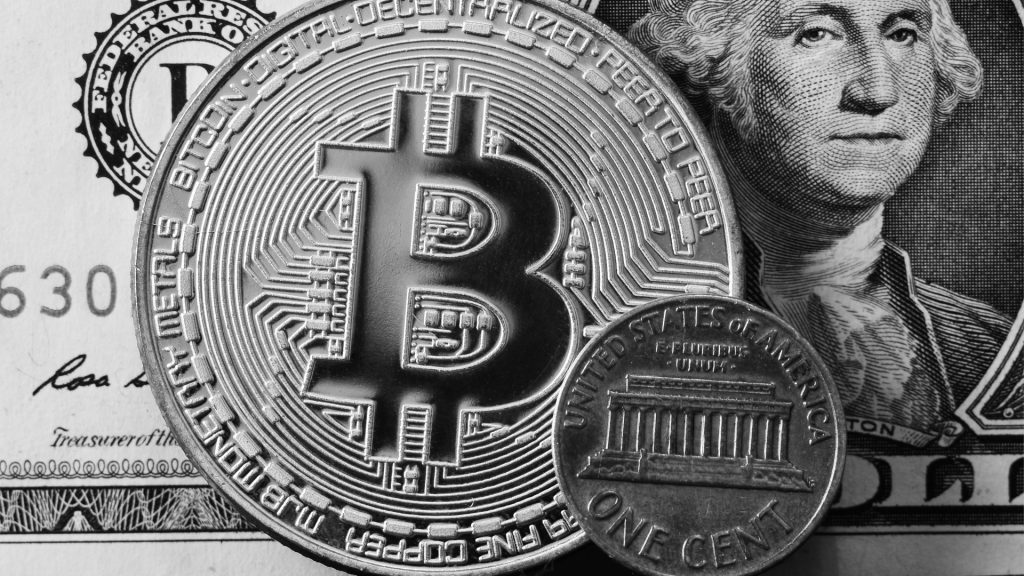Today investors are faced with the dilemma of which asset is safer and more profitable to invest, apart from assets such as shares in well-known companies, bonds and the like, there are two that stand out for their similarities and that attract in a similar way. The traditional investment in gold and the digital investment in Bitcoin.
Generally, young investors with an innovative spirit opt for digital investment (Bitcoin), while veteran investors continue to rely on traditional investment (gold), if we look carefully, we will find similarities and differences that allow us to make a decision.
Among the similarities of both we find:
- No cash flows: Both Bitcoin and gold and unlike other assets, they mostly have no underlying income, profits, or cash flows. Let’s see, by investing in shares of a company (say Apple or Exxon), we buy part of a real company, which produces and markets real, tangible products. As investors, we are entitled to our fair share of these assets, their cash flows and corresponding dividends, and any growth from both. They may vary depending on the behavior of the market, but we are entitled to this part equally. Similarly, when buying bonds, whether public or from a company, we are entitled to a share of interest and principal payments. Older or younger depending on how they behave.
These underlying cash flows directly increase shareholder returns and also reduce risk. Although stock markets and investor feelings can be quite fickle, it is generally a reasonable and profitable investment.
On the contrary, when buying gold, we are entitled to the purchased portion of gold and nothing more. Gold does not generate cash flows, dividends, or coupon payments and does not grow or multiply. Likewise, when buying Bitcoin we are entitled to the amount purchased and nothing more. The lack of underlying cash flows greatly increases risk and uncertainty, and is a significant negative factor for both Bitcoin and gold. Some analysts argue that the lack of underlying value means that these assets, primarily Bitcoin, have no intrinsic value. Although the lack of underlying cash flows is a significant negative for both assets, it does not necessarily mean that the assets have no value. Both are worth something and have been worth something for quite some time, so getting to zero seems incredibly unlikely.
- Unclear valuation: It is reasonably easy to analyze the fundamentals of most asset classes. For example, when valuing a bond, as investors we can observe its performance, credit rating, nominal/market value and other fundamental characteristics. It is even possible to identify undervalued bonds, invest in them and receive returns that outperform the market. Stocks are similar to bonds in this aspect, although more dependent on the market feeling and valuation than bonds. When valuing Bitcoin or gold, it is complicated to go to these simple metrics, although we can observe more specific, more vague, less informative metrics such as inputs and outputs, investors’ feelings, and demographic data, among others. In practice, the value and valuation of Bitcoin and gold are very uncertain and, in a way, it is detached from each and every one of the fundamentals. The valuation of Bitcoin is more complicated than that of gold since the cryptocurrency lacks significant real-world applications or non-digital peers. These valuation issues complicate the analysis of both asset classes and increase investor risk.
Speaking of the differences we can note the following:
- Intrinsic Properties: Gold is a real physical product that has clear industrial and consumer applications and is used in a variety of products such as jewelry and electronics. Bitcoin is a digital asset or cryptocurrency that can be used to make payments and other financial transactions. Although both assets rely heavily on investors feelings for their prices and valuations, gold has stronger fundamentals than Bitcoin. The price and valuation of gold are ultimately somewhat tied to its real-world applications. It is highly unlikely that the price of gold will collapse to zero, or close to zero, for a significant time. Since unusually low gold prices should stimulate consumer, business and industry demand, which would ultimately lead to a recovery in its price. On the other hand, Bitcoin, being a digital asset with no physical presence of application in the real world could collapse to zero or close to zero. Bitcoin was worth 0.10 cents in 2010 and could easily be worth 0.10 cents in 2030, although it is extremely unlikely. Even so, low Bitcoin prices are a possibility and were a reality for years. As we see gold has always been an expensive metal that retains its value relatively well and never trades below certain low limits. The stronger fundamentals of gold are a significant benefit for the asset and its most important advantage in relation to Bitcoin.
- Popularity: Due to its long history of performance, comparatively strong fundamentals and proven effectiveness as an inflation hedge, gold remains a tremendously popular investment asset, especially with older investors, after all, gold was the asset that held up best during previous periods of market turbulence.
Bitcoin is a much more attractive investment for young investors with a desire to innovate, despite the risk. And it’s clear to see why. It is an asset with which they are sufficiently familiar, of which they have a generally positive opinion (unlike more veteran investors, who remain confident in Gold and view Bitcoin with suspicion), and plan to continue investing in digital despite certain conditions and elements that are causing nervousness.
Although the dilemma continues, for now, and due to the intrinsic characteristics of each asset, it seems to continue winning the traditional investment in gold. If the recent COVID-19 pandemic taught us anything, it was that in the face of instability, people are going to choose to invest in safe assets. Some are betting on Bitcoin, but most are leaning towards gold, as Bitcoin investment looks riskier and highly speculative.
According to a published report, Finbold stressed that the performance of the precious metal generated greater profits than that recorded by the digital currency in the main markets so far in 2022. They detail that the return on investment shown by Bitcoin so far this year is approximately 40% below that recorded by gold, according to its main quotes in the world, being surpassed even by other precious metals such as Platinum, which presented gains of up to 39.4% in the same period.
Despite the fact that enthusiastic investors of the ecosystem such as Anthony Scaramucci, Robert Kiyosaki, Mark Cuban, Bill Miller or Michael Saylor qualify Bitcoin as Digital Gold, as it is a much more accessible good, with scheduled shortages, easily portable and whose potential as a store of value is guaranteed in multiple properties, cryptocurrencies are not having their best year this 2022, with a collapse that has dragged the market since the beginning of the year and on the eve of what many call the “crypto winter” where a short-term recovery is in sight. Therefore, today, except for younger and riskier investors, Bitcoin is not perceived as a totally safe financial haven.
However, the financial market is evolving and adapting. As older investors retire and younger investors become more seasoned, we may see a change in this picture.

